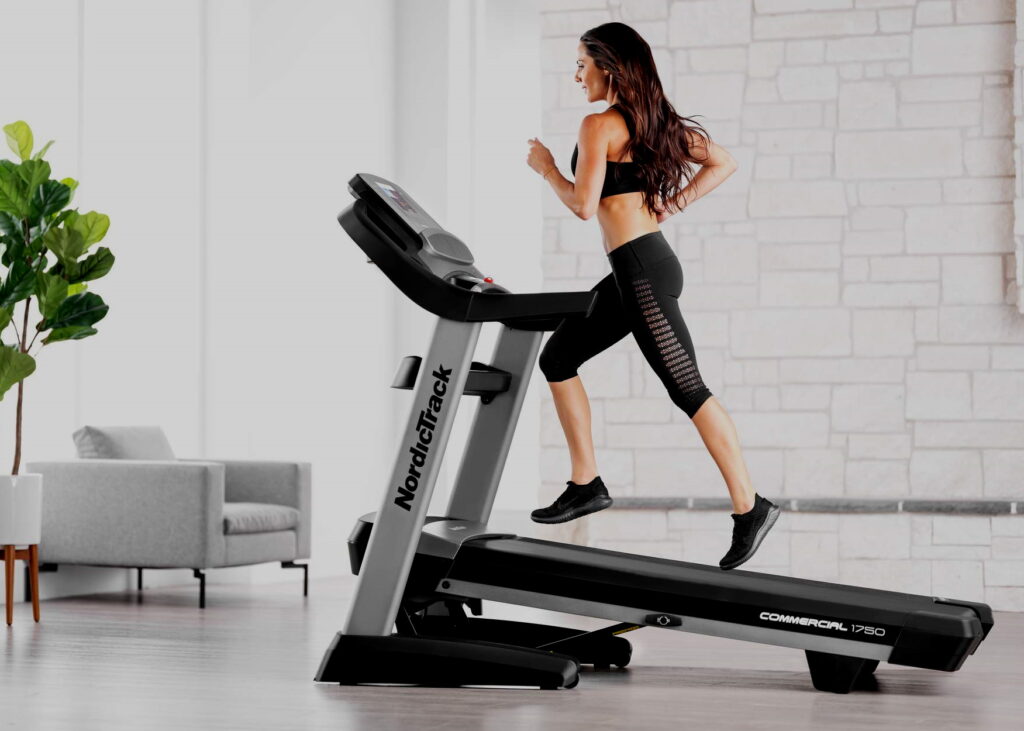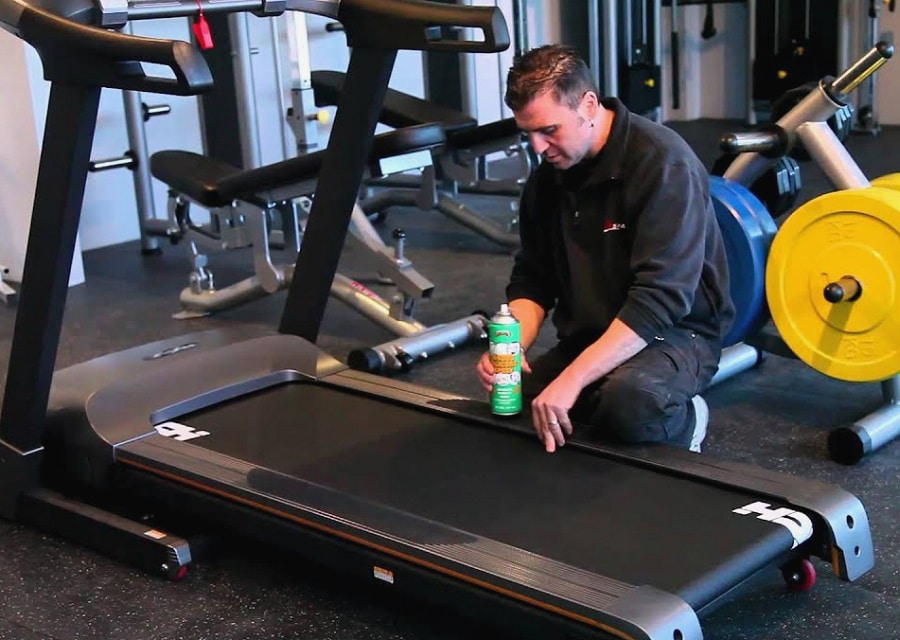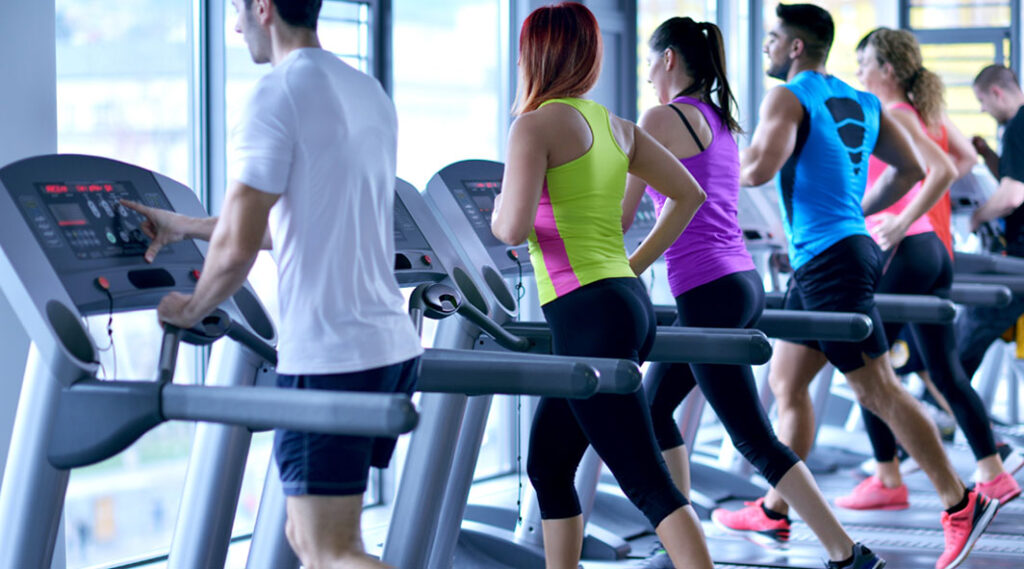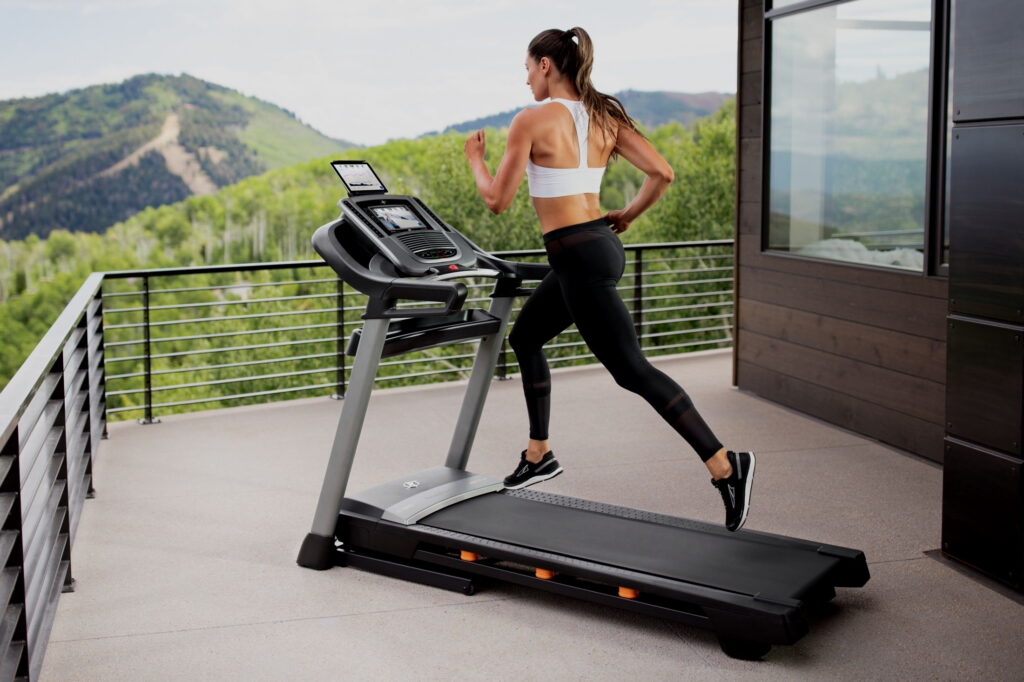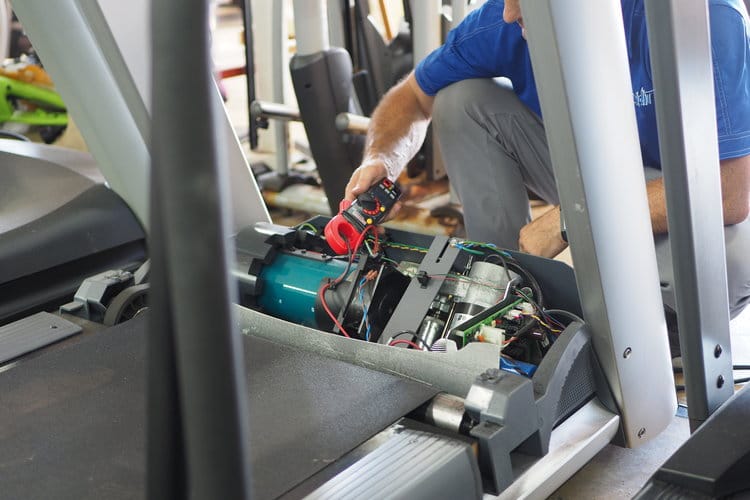Some people simply don’t give the treadmill the credit it deserves. While it isn’t always the only option you should utilize, there are many benefits to running on the treadmill. Whether you’re using this as a means to get some running in, starting your weight loss journey, or even just adding in some cardio, you’ve got a ton of options.
Before you start, take the time to learn how to run on a treadmill. You can easily mix up your exercises to get different types of workouts. However, it’s still important to know the proper form and technique to make the most of your run.
From settings to speed to safety, we’ve got you covered. Don’t expect to get it perfect or have a journey like everyone else’s. Take a look at this guide to learn how to use the treadmill to your advantage.
Running is running, right? Well, then how is there a right or a wrong way to use the treadmill? We all have different needs when it comes to our health or workouts but that doesn’t negate the ability to do it right.
Before you get started, make sure you choose one of the best treadmills options to meet your needs. Whether you want a specific design, a cheap fix, or something with all the bells and whistles is completely up to you.
There are ways to run safely so that you prevent injury and those tips can be brought over to the treadmill too. And then there are certain safety tips for a treadmill specifically that you might want to keep in mind.
Check out these tips to learn how to run on a treadmill properly.
First things first, you need to get familiar with your treadmill. If you have the best manual treadmills like these, there will be fewer settings to confuse you. Everything is manual rather than electronic. If you have a digital or electronic treadmill, learn the different ways to adjust the systems and settings.
If you’re like the majority of people, you probably toss the owner’s manual aside and never think of it again. However, we recommend that you at least glance through the manual. You should practice the settings and familiarize yourself with how every detail works before you start anything.
This gives you the chance to understand the machine and know how to be safe or make adjustments as needed.
You can use a portable dolly like this one to help move your treadmill to its new location.

With every type of workout you do, you need to integrate a warm-up and a cool-down. The warm-up is designed to help your body prepare for the workout you’re about to have. It starts getting the muscles warm and the heart pumping. Take it slow here. Warming your body will help to prevent injuries.
As you warm up, you should be doing some stretching as well. This will greatly improve the productivity of your run but will also prepare your body and likely prevent injuries at the same time.
Take it slow. There is no need to run a marathon on your first day or even month on the treadmill. Your body will need time to adjust to the running process and you can increase your challenges as you continue on your treadmill journey.
Start slow and with a low incline. Start with short periods of running. You will increase your endurance, allowing you to increase speed, incline, and time as you continue running and training.
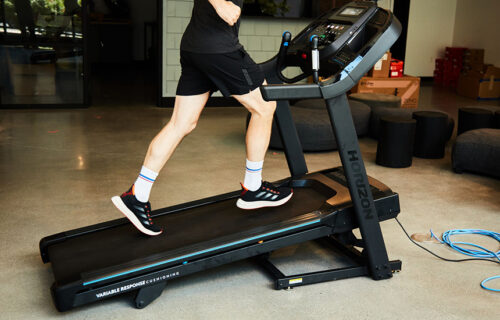
An incline is a great way to challenge yourself. We recommend setting an incline, even if it is a slight one. Each incline typically has a specific degree or measurement. This might vary depending on your machine so be sure to check the details for yours to be sure.
Start off with just a slight incline. As you get used to running, you can increase this or you can move it up to give yourself a challenge here and there. Make a habit of changing up the incline, even throughout your workout.
While running on a treadmill isn’t like the outdoors, you can do your best to try to simulate the experience. Many people get bored on the treadmill because it’s the same mundane motion and has no change of scenery.
Try visualizing a route or maybe even turning on a TV or sound machine that portrays the outdoors. Some high-tech treadmills actually have screens that will mimic the outdoors as well.

As you’re running on the treadmill, be sure to move your arms. This will help elevate your heart rate and it will also work out more of your body. Your treadmill has handrails but instead of just holding on to the rails the entire time, try pumping your arms. T
The rails are really meant to help steady you when needed or to climb on and off. However, when you’re running, your form will be better if you use your arms. It’s better for a total workout too.
Some runners have a tendency to lean forward as they run. On the treadmill, you’re even more likely to do this if you’re grabbing the rails. You don’t need the momentum of leaning forward here like you might on the ground or on a hill. The treadmill belt already simulates this motion.
Instead, keep your body upright and even try to maintain good posture as you run. This will be much better on your body but it’s also going to help your balance too.

Another common mistake on the treadmill is looking down. You might be looking down because you’re worried about stepping off or stepping wrong but you need to keep your gaze forward. This is all about safety.
Just like leaning forward is bad, looking down is going to make you try to lean your body forward. In addition, it could actually throw off your balance and make you fall. Running looking down could give you neck or back pain and it will certainly compromise your safety too.
As you are running, your stride is important. This is all about pace and stability why you run. If you do run outdoors, use the same stride on the treadmill that you do outside.
If you are new to running, here are a few tips for you.
These things will benefit your stride. You could also keep count of your stride and work to improve the count based on a specific timeframe as you go.
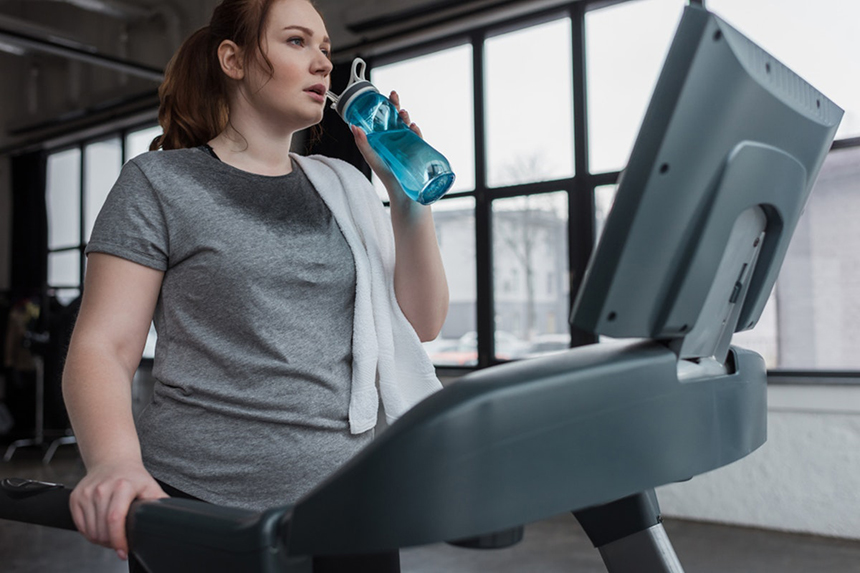
This is perhaps the most important element of running on a treadmill. If you don’t stay hydrated, you’re likely going to experience fatigue, excessive soreness, and maybe even muscle cramps. Hydration is vital to your health and your workout.
Drink a minimum of four ounces of water for every 20 minutes spent on the treadmill. You should be sipping some water as you run and not gulping it down. Be sure to hydrate throughout the day after your run as well.
The cool-down is just as important as the warm-up. During the cool down, you’re going to slow it down and start allowing your heart rate to come down naturally. This will help your body not have a shock-type adjustment to suddenly stop your run.
Instead, it allows your body to naturally adjust, bringing your heart rate down, and relaxing the body slowly. Your cool down should also involve some stretching for those muscles that you just worked hard.
As a beginner, the first thing to do is get a great treadmill. When you’re checking out your option, be sure to look for things that meet your preferences. These best treadmills under $600 are all quality choices that you might consider. Of course, if you have a higher budget that’s totally ok too. We shared some other options to sort through earlier in this guide. Feel free to browse those. Don’t forget to also consider a furniture dolly to help you move around the treadmill if necessary.
As a beginner, you need to learn your machine and follow the tips we shared here for how to run on a treadmill. However, there are a few more things to be aware of.
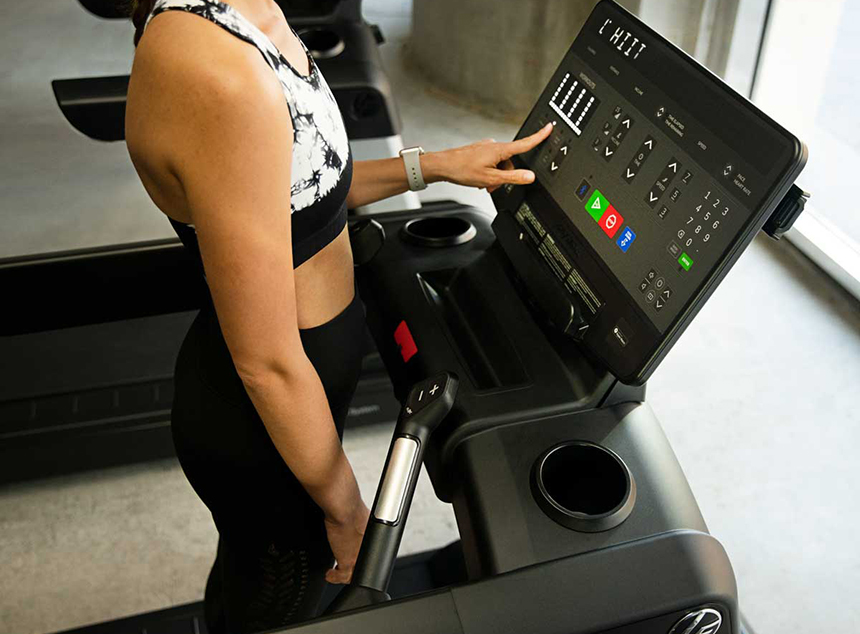
Learn how to read your display or tracker, if your treadmill has one. Take the time to figure out the various speed options as well as your incline features. You should also find some way to track time or distance if your treadmill doesn’t do that for you.
With these details, you’re following the incline to determine the slope of your run. The distance details the equivalent of how far you’ve run, and the time obviously tracks your mile.
These are the main tips to follow:
If your goal is to lose weight, that’s great! Your treadmill can certainly help you reach that point. Each person has different needs and capabilities so it’s important to challenge yourself but also know your limits.
You don’t have to go all out on your first run. Start slowly and work yourself up and challenge yourself as you go. Plan to run 3-5 times a week for weight loss. You can also add in additional types of workouts rather than only running.
When you are running, add a little incline and try out different speeds. Consider testing out a HIIT workout on the treadmill to really challenge your body.
How long you run will ultimately depend on your strength and your goals. Some people run for 30-60 minutes but you may need to start out with lower times as you build up endurance. If you’re a long-distance runner, you will probably have longer running times.
However, for a simple but effective run, you can typically plan for about 30 minutes to get in some quality cardio and a good burn. There is not necessarily a right or wrong answer to the timeframe. However, be sure to listen to your body as you go.
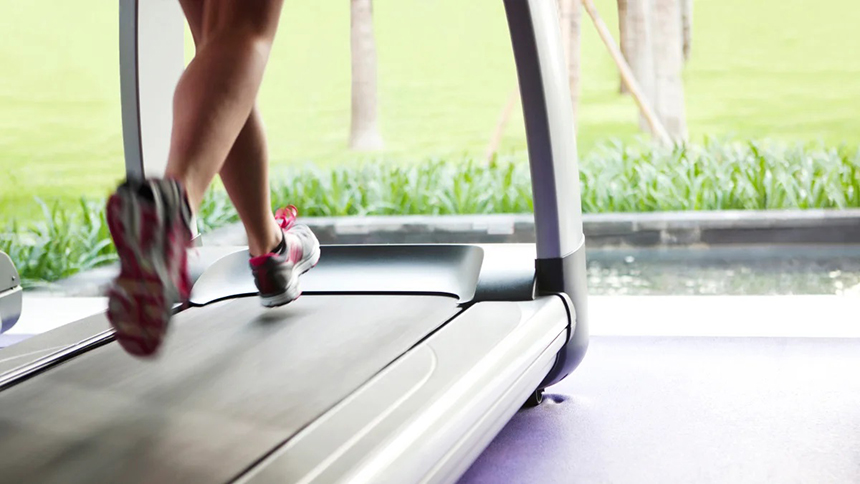
If you’re wondering how fast to run on a treadmill, this can be individualized as well. Some people might run a 7-minute mile while others will take more like 10-15 minutes. And that’s ok. The key to taking away from this is to maintain your stride but also learn to challenge yourself and build up endurance.
Not everyone runs fast. Instead of focusing on speed, focus on your stride, and maybe over time, you will be able to improve that stride. The average setting to use for running or walking is typically around 3-4. Each treadmill varies so feel free to test these out and find where you are comfortable.
This range can be anywhere from 5-7 MPH on the rating scale. You may need to start slowly but remember that this is really more about your space and you can work to increase your pace and improve that speed over time if you need to.
Running on a treadmill isn’t a one size fits all workout. Your workout needs and abilities will be different from the next person and that’s totally ok. Learning how to run on a treadmill is primarily about learning proper form, how to be safe, and tips for making the most of your workout as well.
We hope that you find this guide helpful in understanding best practices, as well as some basic tips. Now, all that’s left for you to do is get started. Set your goals and simply get to work. Make this journey your own and learn what works for you. Don’t forget the warm-up or cool-down!
